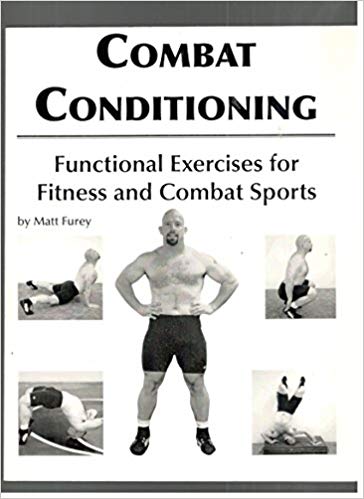New research unlocks the secrets, discover the main causes of joint pain…
According to The Mayo Clinic, most common symptoms of aging are:
Inflammation is one of the leading causes of joint pain in adults…
So, is there a way to be free from nagging joint pain?
Renowned Dr. Chris Centeno M.D., specialist in regenerative medicine…
Says joint instability is one of the leading causes of cartilage breakdown.
Do you experience shifts, pops, cracks, soreness or swelling after activity?
According to Dr. Centeno this could be related to low cartilage in your joint.
Even if you experience small bouts of pain, swelling or stiffness…
The pain could eventually balloon into a big problem.
It could decrease quality of life forcing you to live with unnecessary pain.
Is it time to give your immune system what it needs to protect your health?
Now, you might be thinking…
Paragraph
Can your body heal itself quickly without harmful drugs?
Can bone broth help in eliminating pain from the body?
And regain optimal health with rejuvenation…

How can bone broth improve your health and life?
Can bone broth help harness nature’s healing power?
Health is the foundation of life…
When you’re filled with energy you’re able to reach your peak.
Bone broth isn’t just another trend based on ancient nutrition.
For as long as humans have been cooking food over fire…
People have simmered bone stock from fish, beef, chicken, turkey.
And other animals typically discarded which was a daily part of life.
Bone broth is still celebrated by cultures around the world.
It may be one of the “hottest trend in health” today…
Even though bone broth is centuries old.
Almost every culture throughout history has used a form of bone broth.
What are some of the healing properties of bone broth…
Bone broth is anti-ageing, contains high amounts of collagen.
Collagen is structural building block of strong skin with youthful glow.
Collagen supports hair growth, skin regeneration, keeps nails strong.
Bone broth contains vital minerals:
- Calcium
- Phosphorus
- Magnesium
Important to help build and maintain strong and healthy bones.
Bone broth is shown to support digestive issues because it is rich in gelatin.
Gelatin is essential for connective tissue function.
Gelatin literally acts like a seal to help heal the gut.
Key for people suffering chronic inflammation or leaky gut syndrome.
The long cooking time to create bone broth allows for breakdown of cartilage and tendons releasing anti-inflammatory compounds:
- Chondroitin
- Sulfate
- Glucosamine
Compounds found in expensive supplements for arthritis and joint pain.
And these compounds keep your joints young and flexible.
Natural, good, healthy, refreshing, groundbreaking, gutsy and raw…
Why is bone broth a must have for every serious bodyweight trainer?
Simply because bone broth is a simple recipe and it’s easy to prepare!
I’ve always appreciated simple recipes…
Recipes everyone can make by themselves.
Bone broth is a simple recipe you can make yourself.
One of the most healing foods for energy and recovery.
Why would you want the incredible health benefits?
Because bone broth is rich in nutrients, gelatin, collagen and glycine…
Bone broth can help heal gut lining, improve joint function.
And boost energy levels including skin health…
Why wouldn’t everyone love bone broth?
It’s totally natural and you can find something here to inspire you.
On top of being good for you, some people call it a superfood.
Well, bone broth is pretty darn healthy and good.
And one “superfood” everyone could benefit from…
Drinking bone broth is one of the best ways to replenish electrolytes.
Including eliminate symptoms of feeling run down and tired.
What’s the so called “magic” behind bone broth…

Thanks to the health benefits, bone broth is valued and effective.
Many people have embraced it’s powerful healing properties.
In fact, bone broth is time-tested.
And recognized for it’s high concentration of minerals.
Plus anti-inflammatory amino acids…
As well as providing gut-healing proteins of collagen and gelatin.
Some of the health benefits from bone broth include:
- Treating leaky gut syndrome
- Overcoming food intolerances and allergies
- Improving joint health
- Reducing cellulite
- Boosting immune system
- Supply of key electrolytes
While it’s true you’ll get plenty of nutrients…
One of the main concerns with eating a diet richer in animal protein is over-consuming an amino acid called methionine.
Methionine is found in egg whites, fish, chicken and beef.
It acts as an antioxidant and helps metabolize foods we eat.
Methionine is only good in the right amounts.
If you eat too much of it, Methionine can build up in blood and lead to symptoms:
- Muscle weakness
- Liver damage
- Neurological problems
Did you know bone broth actually balances the methionine in your body.
So why use oxtail and what exactly is it?
Oxtail is the tail of cow with skin removed…
The advantage of oxtail for bone broth (use tender oxtail meat and tallow).
Tallow is great when used for cooking the same way as ghee or lard.
When using Oxtail in Bone Broth specifically the health benefits include nutrients:
- Calcium
- Vitamin B12
- Iron
- Vitamin B6
Including wellness enhancements of all the above benefits.

Bone Broth Using Slow Pressure Cooker:
Prep Time: 10 minutes | Cook Time: 10 hours | Serves: 6-8
Ingredients:
3.5 pounds oxtail
Can use assorted mix of bones (chicken feet, marrow bones, etc.)
1 medium parsnip or parsley root
2 medium celery stalks
1 medium onion, skin on
5 cloves garlic, peeled
2 tablespoon apple cider vinegar or fresh lemon juice
2-3 bay leaves
1 tablespoon sea or rock salt
8-10 cups water, enough to cover bones
Use no more than 3/4 capacity of your slow pressure cooker
Instructions:
Peel the root vegetables and cut them into thirds.
Halve onion and peel.
(Keeping onion skin on produces a nice golden color).
Halve garlic cloves.
Cut celery into thirds.
Place everything into slow pressure cooker.
Add bay leaves.
Add oxtail / bones.
You can use any bones:
Add 8-10 cups of water
Fill ⅔ of slow pressure cooker…
Add vinegar or freshly squeezed lemon juice.
(Vinegar or lemon juice helps release more minerals into broth).
Add sea salt.
Cover slow pressure cooker and cook for 6 hours (high setting).
Alternatively cook up to 10 hours (low setting).
To release even more gelatin and minerals, cook it up to 48 hours.
To do that, remove oxtail using tongs…
Then shred meat using a fork.
Place bones back into pot and cook up to 48 hours.
Remove large solid bits.
Pour broth through a strainer into a large dish.
Discard vegetables and set bones aside to cool down.
When bones are chilled, shred meat off the bone with a fork.
Use broth immediately or place in fridge overnight.
Next day broth becomes firm and jelly.
Oxtail is high in fat, greasy layer on top (tallow) solidifies.
Simply scrape tallow off (as much as you want).
Keep broth in fridge and use over next 5 days…
Bone Broth Using Conventional Oven:
Prep Time: 10 minutes | Cook Time: 10 hours | Serves: 6-8
4 pounds grass fed oxtail (1.8 kg) chopped
200 ounces of water (6 litres)
2 carrots, chopped
2 celery sticks, chopped
2 onions, halved
1 leek, sliced
1 handful of parsley stalks
3 black peppercorns
3 bay leaves
6 sprigs of thyme
Preheat oven to 200 C / 392 F
Instructions:
Put oxtail into baking dish, place in oven for 20 to 30 minutes until golden.
Remove oxtail from oven and carefully place into stockpot.
Add onion, carrot, celery, leek and water to pot.
Fill pot with water and place over a medium heat.
Bring to boil, reduce heat to low simmer.
Add parsley stalks, peppercorns, bay leaves and thyme.
Cover pot partially to allow slow simmering to begin.
Simmer partially covered over low heat for 6 hours (more the better)
Remove oxtail, strain bone broth through sieve or muslin (discard solids).
Refrigerate bone broth overnight, remove excess fat that solidifies over top.
Your cold broth should look like a jelly at this stage, full of goodness.
Heat broth over stove. enjoy natural flavor or as base for soups or sauces.
Add these for richer flavors and benefits:
Add 3 star anis
3 cloves
1 tablespoon grated ginger
2 cloves garlic
2 sticks of cinnamon
1 teaspoon of tamari
1 teaspoon turmeric
1 teaspoon of coriander
Happy, strong and healthy, what else would you want?
Bone broth can be mixed into smoothies, pancakes or drinks…
Here’s how to add bone broth to your smoothie!
Ingredients:
1 cup frozen ripened bananas
1 quarter cup raw cashews
2 tablespoons cocoa powder
1 teaspoon carob powder
(Carob adds extra fudginess to flavor)
12 ounces coconut milk
1 teaspoon raw honey
1 tablespoon of bone broth
Directions:
Place all ingredients in blender.
Purée until creamy smooth.
Add coconut water to reduce blend if you want.
This is a nice everyday treat which I enjoy most afternoons.
It satisfies cravings and provides amino acids for total wellbeing.
And it’s a natural protein smoothie providing vital health compounds.
You want to ensure your body gets it’s daily protein requirements.
Basic and simple because your body wants adequate amino acids for the
construction of enzymes and other molecules integral to solid health.
Bone broth can work effectively to regulate appetite, increase satiety and
encourage significant weight loss…






























